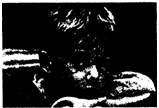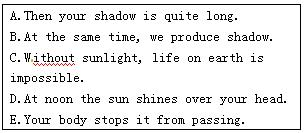��Ŀ����
�������Ķ�����10С�⣻ÿС��1�֣���10�֣�
According to the Center for Disease Control and Prevention (CDCP)(��������Ԥ������), if you don��t often wash your hands, you will be affected by viruses(����) from many places and make yourself ill. You��re at risk every time you touch your eyes, nose or mouth. In fact, one of the most common ways people catch colds is by rubbing(��) their noses or their eyes when there are cold viruses on their hands. If you don��t often wash your hands, especially when you��re sick, you may spread the viruses directly to others. You should wash your hands in the following situations:
�� After using the bathroom.
�� After blowing your nose or coughing.
�� Before eating, serving or getting ready for food.
�� After going to see anyone who is sick.
�� When your hands are dirty.
There��s a right way to wash your hands. Follow these simple steps to keep your hands clean.
�� Use neither cold nor hot water.
�� Wash for 15 seconds.
�� Wash well under warm running water and dry them with a clean towel.
���ݶ������ݣ��ڱ����еĺ�������д��ȱ���ʣ�ÿ����һ�ʡ�
According to the Center for Disease Control and Prevention (CDCP)(��������Ԥ������), if you don��t often wash your hands, you will be affected by viruses(����) from many places and make yourself ill. You��re at risk every time you touch your eyes, nose or mouth. In fact, one of the most common ways people catch colds is by rubbing(��) their noses or their eyes when there are cold viruses on their hands. If you don��t often wash your hands, especially when you��re sick, you may spread the viruses directly to others. You should wash your hands in the following situations:
�� After using the bathroom.
�� After blowing your nose or coughing.
�� Before eating, serving or getting ready for food.
�� After going to see anyone who is sick.
�� When your hands are dirty.
There��s a right way to wash your hands. Follow these simple steps to keep your hands clean.
�� Use neither cold nor hot water.
�� Wash for 15 seconds.
�� Wash well under warm running water and dry them with a clean towel.
���ݶ������ݣ��ڱ����еĺ�������д��ȱ���ʣ�ÿ����һ�ʡ�
| Conditions for spreading Viruses | When your hands are dirty. When you are ��1: . |
| Time to wash hands | After using the bathroom. After blowing your nose or coughing. ��2: having food . After ��3: sick people. When hands are dirty. |
| ��4: way to wash hands | Use ��5: water and wash 15 seconds. Then wash well. |
��1:sick/ill
��2:Before
��3:visiting/seeing
��4:Right/Correct
��5:warm
С��1:���ݵ�����especially when you��re sick��֪�������������ʱ�����״�Ⱦ����������sick/ill��
С��2:����Before eating��֪����Before��
С��3:����After going to see anyone who is sick.��֪���ڿ���������֮����visiting/seeing��
С��4:����There��s a right way to wash your hands��֪������˵����ϴ�ֵ���ȷ����������Right/Correct��
С��5:����neither cold nor hot water�Ȳ����ֲ��ȵ�ˮ��֪��ϴ������ˮ��ã�����warm��

��ϰ��ϵ�д�
�����Ŀ

 There was once a rich man who loved his little boy very
There was once a rich man who loved his little boy very ght. _____________��5:______________Most of us like to stand in the shadow of a tree in summer. But some people are afraid of their own shadow at night. They do not want to walk in a dark street. They do not want to see the shadow, either. But still light and shadow usually go together.
ght. _____________��5:______________Most of us like to stand in the shadow of a tree in summer. But some people are afraid of their own shadow at night. They do not want to walk in a dark street. They do not want to see the shadow, either. But still light and shadow usually go together. 